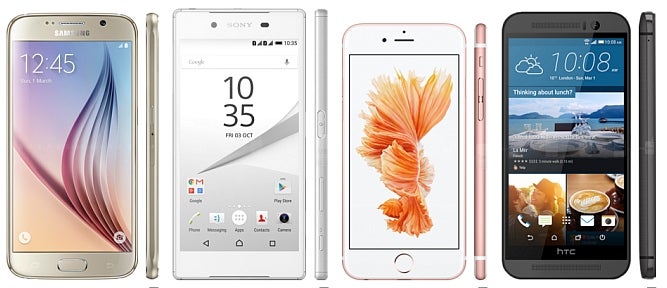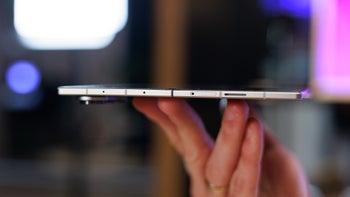Four common characteristics of the average premium smartphone in 2015

QHD displays
While 2014 was the year that brought us the first QHD smartphones, it wasn't until this year that 1440 by 2560 pixels became the new standard resolution in the high-end sector of the market.
Most of the premium phones launched since January come with QHD displays. The Samsung Galaxy S6 series, the LG G4 and the LG V10, the Motorola Moto X Play and the new Droid Turbo 2, the Huawei Nexus 6P, as well a range of other high-end Android handsets all integrate QHD screens. Microsoft’s new flagships, the Lumia 950 and the Lumia 950 XL also come with QHD displays.
Sony and HTC, two iconic smartphone makers, have openly embraced this train of thought in the past couple of years. As such, the HTC One M9 and the Sony Xperia Z5 both come with FHD panels.
For its part, Apple doesn’t compete in the PPI race. The iPhone 6s comes with a 4.7-inch display running at 720 by 1280 pixels while the iPhone 6s Plus boasts a 5.5-inch display running at 1080 by 1920 pixels.
Metallic builds
In the past few years, metallic builds have slowly but surely become a must-have for premium smartphones. Prevalent as this trend has been since the start of the decade, 2015 has seen the matter escalate even further.
Even Samsung, a smartphone maker that was often criticized for its plastic phone builds, has made the radical decision of embracing metallic builds in its new premium phones.
While not all of this year's premium handsets come with an all-metal build, most of these high-end phones integrate a metal frame at the very least.
The HTC One M9, the Samsung Galaxy S6, the Google Nexus 6P, the Sony Xperia Z5, the LG V10, the Motorola Moto X Style, and the Lumia 950 series all integrate metal in their bodies. The iPhone 6s series goes the extra step and embodies a metal unibody, which means that the outer shell also doubles as the chassis.
Sealed but fast-charging batteries
In terms of battery, we've noticed two separate trends among this year's premium Android smartphones: nearly all of them come with sealed batteries and fast-charging capabilities.
Fortunately, another trend that can be noticed is that most smartphone makers now integrate fast-charging capabilities in their premium smartphones. As a result, most of the Android flagships charge significantly faster compared to their direct predecessors: the Galaxy S6 by 38%, the HTC One M9 by 47%, the Sony Xperia Z5 by 17%. Other premium phones that launched in 2015 do not have direct predecessors, but most of them take under two hours to fully recharge the battery. It's far from what these upcoming battery technologies hope to deliver, but it's definitely a step in the right direction.
Fingerprint readers
Although some smartphone makers have integrated fingerprint readers on their precedent flagships, it was in 2015 that fingerprint sensors became a common characteristic for all premium phones.
The Samsung Galaxy S6 and Note 5, the Sony Xperia Z5, the Google Nexus 6P, the Motorola Moto X Style, the LG V10, the iPhone 6s series, and the Lumia 950 series all come with touch-based fingerprint readers.
Exception: The HTC One M9 is an interesting exception to this rule: the international variant of the phone doesn't feature fingerprint authentication, but the HTC One M9+ - the Asian version of HTC's flagship - does. Given that the One A9 comes with a fingerprint reader, we're willing to bet that HTC's next premium offering will come with a fingerprint reader, just like all of the 2016 flagship smartphones.
Follow us on Google News














Things that are NOT allowed:
To help keep our community safe and free from spam, we apply temporary limits to newly created accounts: